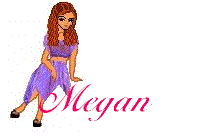When you Don't Need a Hoop

Using a hoop or frame, means that you stitch with an up and down “stab” motion, and whilst this style suits most stitches, there are some, notably the “line” style stitches, that are not as easy to execute in this manner.
Of course, not using a hoop leaves you with another set of needs – extra care must be taken that your stitches all have the same tension, and that you do not pull them so tight that the fabric puckers. I cannot give you any quick fixes for this, as it is purely a matter of practice to resolve.
Stem Stitch
Stem stitch is one of the basic freestyle embroidery stitches, and the look of stem stitch relies on the fact that each stitch is set on a very slight oblique angle to the line you are following. This can be best achieved without a hoop, as you can more easily control your thread and fabric to produce the best set of the stitch.
As usual, however, care and practice must be taken to ensure that you do not pull your stitch too tight, or it will pucker the fabric, and cause a visible hole where the thread enters and exits the fabric.
Whilst I prefer to use a hoop if I use stem stitch as a filling stitch (especially if I am building it up, such as used in Casalguidi style embroidery), it is possible to get the same results without one.
Running Stitch and Double Running Stitch
Running stitch is characterised by how the stitch is formed – “running” needle and thread through the fabric in a continuous motion. The difficulty with this stitch is to ensure that all the stitches formed by the running motion are the same size and distance apart.
Double Running Stitch (also called Holbein Stitch) is the same as running stitch, except once you have finished the first running stitch pass, you turn the embroidery around, and go back; filling in the blank spaces.
Back Stitch
Another of the “line” stitches whose execution is suited to being done without a hoop. Similar to stem stitch, this stitch results in a smooth line. You have to be very careful in stitching that you do not pull your thread too tight as it will distort the line of stitching and result in visible stitch holes in the fabric.
Chain Stitch, Lazy Daisy (Detatched Chain) Stitch and Chain Stitch variations
This set of stitches I’ve grouped together (as with the next set) as they are basically the same stitch – the difference is that chain stitch is a joined stitch and lazy daisy is a single detatched stitch. Like stem stitch, these stitches are basic freestyle embroidery stitches and often one of the first an embroiderer learns.
These stitches work well without a hoop because of the way the fabric and thread is manipulated to form the stitch. A combination between a knotted and flat stitch, they do need to be stitched with care to ensure that you do not pull the thread too tightly as it will cause the stitch and the fabric to distort. If the thread is pulled too tight, the fabric inside the loop can pucker and not lie flat.
Buttonhole, Blanket Stitch and Detatched Buttonhole Stitch
Like chain stitch and its variations, the way that thread and fabric need to be manipulated means that these stitches work best when stitched without a hoop. In fact, as both buttonhole and blanket stitch are edging stitches, if stitched as purpose (i.e. on the edge of a piece of fabric) then using a hoop or frame would be difficult.
Detatched buttonhole stitch is a stitch that is not actually anchored to the fabric, but hangs off a foundation row. Because of this, I find it easier to stitch without a hoop – I can keep the fabric well away from the stitch and allows it to truly hang in the air.
Of course, all of these stitches can be stitched using a hoop or a frame. You can loosen the tension of the fabric in the hoop to make it easier to stitch them, or use the stab stitch method.
Recommended Reading
The Embroidery Stitch Bible
Mary Thomas's Dictionary of Embroidery Stitches
The Embroiderer's Handbook
Is there anything that you would particularly like to see an article on? If so, please contact me with your suggestions.
Happy Stitching

© 2012 Megan McConnell
This site needs an editor - click to learn more!

Related Articles
Editor's Picks Articles
Top Ten Articles
Previous Features
Site Map
Content copyright © 2023 by Megan McConnell. All rights reserved.
This content was written by Megan McConnell. If you wish to use this content in any manner, you need written permission. Contact
BellaOnline Administration
for details.


